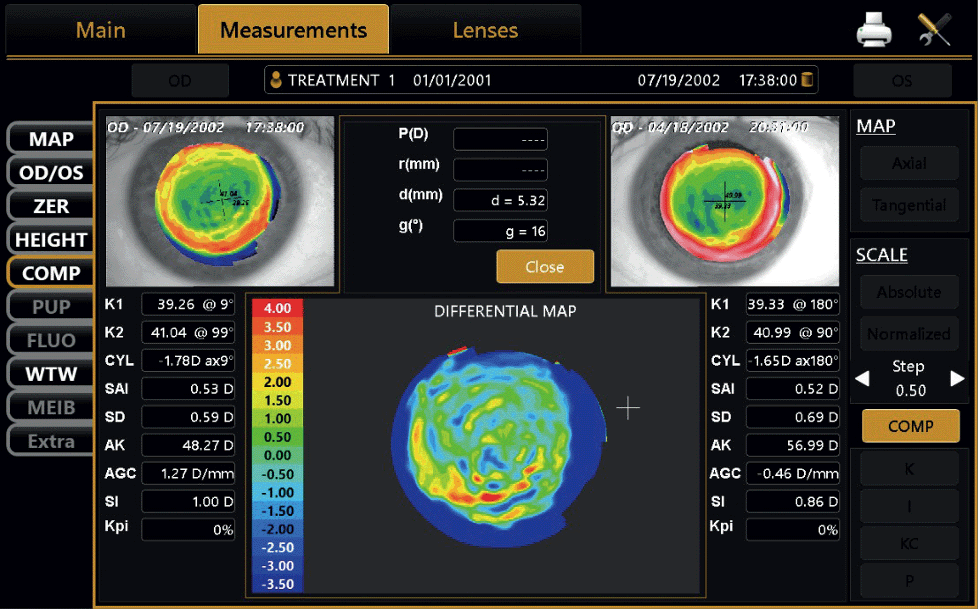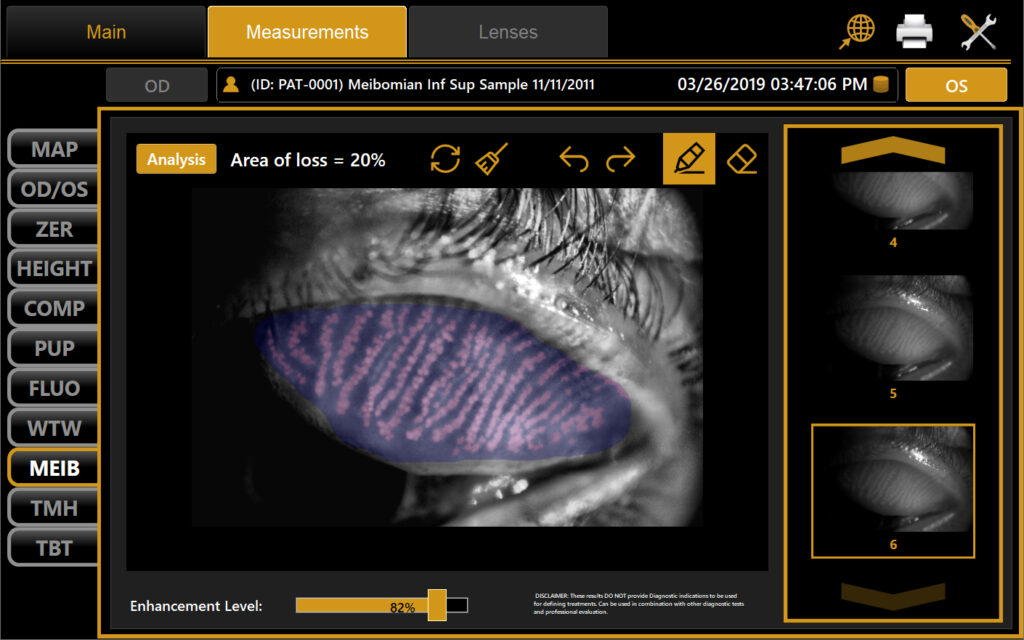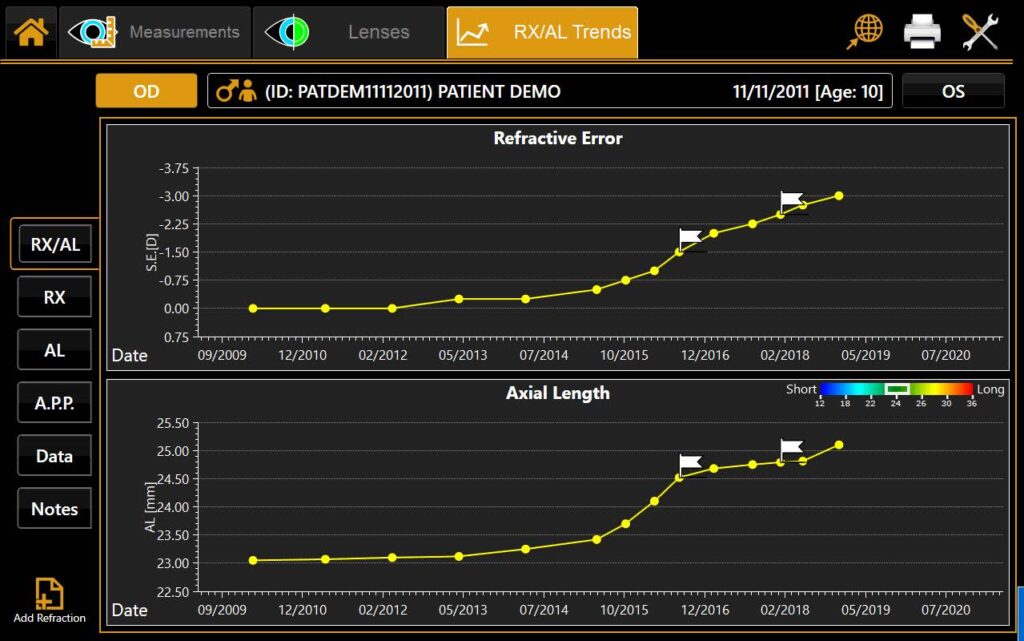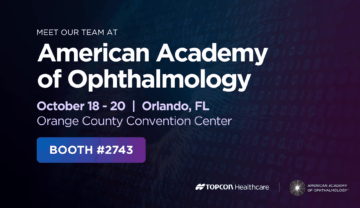Strategic Integration of Topcon Technology for Meibography and Myopia Management
Jesus Martinez, OD, FAAO, FSLS, rose to the challenge of establishing a successful new optometric practice amidst the aftermath of the COVID-19 pandemic. After completing a cornea and contact lens fellowship at the University of Houston College of Optometry, he initially decided to work in a private practice in Southern California, focusing on specialty contact lens fitting. However, when the pandemic disrupted his schedule and caused uncertainty as an associate doctor, Dr. Martinez decided to take the leap and moved to Henderson, Nevada, to open his own practice, St. Rose Eye Care.
Technology improves efficiency and lets staff spend more time with patients.
As a young optometrist investing in technology for a cold-start office, Dr. Martinez leveraged his network within the iCare Advisors and Vision Source® community to plan and budget for the full suite of equipment needed for the practice. Looking back on this experience, he says, “I knew I was going to add the Topcon CA-800 corneal analyzer because I wanted to focus on specialty contact lens fits from the start.” With an emphasis on specialty contact lens fitting, Dr. Martinez chose cutting-edge technology to drive optimal clinical outcomes and a great overall patient experience.
Specialty Contact Lens Service
Leveraging technology was a pivotal piece in accelerating the growth of St. Rose Eye Care, as Dr. Martinez was able to differentiate himself as an expert in contact lens fitting with the help of comprehensive diagnostic data gathered from the CA-800. As a result, he built a robust specialty lens service, which now accounts for approximately 25% of the practice, with the other 75% made up of primary optometric care, which includes conventional soft contact lens fitting. Bringing the CA-800 into the clinic from the beginning has played a significant role in helping to increase the proportion of specialty lens fitting cases substantially. Dr. Martinez successfully provided visual rehabilitation for many patients with irregular astigmatism due to corneal ectasia such as keratoconus.

Taking it a step further, he notes, “we evaluated corneal topography with the CA-800 on all our contact lens patients. My technicians know to run a keratoconus screening on any patient with at least two diopters of corneal astigmatism.” He adds these test results were key for documentation of treatment necessity, and what began as a focus on specialty lens fitting for corneal conditions gradually evolved as he discovered the broader potential of maximizing the use of technology in the practice.
Expanding Scope
Looking forward to capturing the versatility of the CA-800, Dr. Martinez began taking advantage of the full dry eye assessment suite roughly six months after purchasing the device. He was able to scale his dry eye services rapidly and notes that the meibomian gland imaging capabilities are especially useful in the diagnosis and management scheme to not only track treatment impact but also to educate patients on the alignment between objective data and subjective symptoms. In addition, meibography is useful for demonstrating the need for dry eye treatments such as nutraceuticals and intense pulsed light therapy. It quickly became clear that this was an essential tool for building a robust dry eye protocol and key for fostering a more comprehensive and personalized approach to dry eye management.

However, looking into the next phase of practice and scope expansion in 2023, Dr. Martinez decided it was time to direct the emphasis toward myopia management. With the new addition of meibomian gland imaging capabilities to the Topcon MYAH optical biometer and corneal topographer, he made a deliberate choice to switch to this versatile device, which would enable management of both myopia and dry eye conditions. The added ability to accurately measure and track axial elongation significantly fortified his myopia management strategy, providing valuable data for the determination of individualized therapy and showcasing the tangible effects to patients and parents.
By leveraging MYAH’s capabilities, Dr. Martinez can effectively identify and care for patients who can benefit from tailored myopia management in addition to growing his existing specialty lens and dry eye management services. Embracing this technological advancement not only improves operational efficiency as a comprehensive diagnostic device but also empowers the practice to allocate more time and resources to personalized patient interactions and education. Overall, the upgrade to the MYAH has effectively provided Dr. Martinez with the best of both worlds, allowing him to grow his burgeoning myopia management patient base while retaining the caliber of care provided for his dry eye patients.

Technological Catalyst for Success
His technological investments, such as the CA-800 and now the MYAH, have been pivotal. These advanced, multifaceted devices not only helped to streamline specialty lens fittings but also helped catalyze the success of building a successful specialty contact lens, dry eye and myopia management service. As a result, St. Rose Eye Care has evolved into a trusted center for comprehensive eye care, integrating cutting-edge technology to deliver tailored solutions for diverse patient needs.





